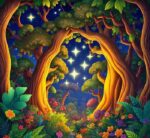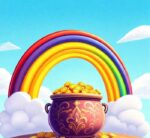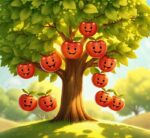- You are here:
- Home »
- words
- » Christmas Words That Start With F [LIST]

Christmas Words That Start With F [LIST]
The holiday season is full of festive words that evoke warmth, joy, and celebration. While many Christmas-related terms come to mind, those that start with the letter ‘F’ bring their own unique flair to the festivities. From decorations to traditions, these words help set the mood for a season filled with love, giving, and community. Whether you’re planning a holiday event, writing Christmas cards, or simply getting into the seasonal spirit, understanding the vocabulary associated with Christmas can add a special touch to your celebrations.
In this article, we will explore a variety of Christmas words that start with the letter “F”. From iconic symbols of the season to the food and festivities that make this time of year so magical, these words are sure to inspire holiday cheer. Whether you’re crafting a holiday poem, playing Christmas word games, or simply looking for new ways to express the season’s magic, this list will offer plenty of festive ideas to enhance your Christmas vocabulary.
Christmas Words That Start With F
1. Fir Tree
The fir tree, a type of evergreen conifer, is often used as a Christmas tree due to its lush green needles and conical shape. It is a symbol of eternal life and is widely recognized during Christmas celebrations.
Examples
- The fir tree is a classic symbol of Christmas, often used as the central decoration in homes during the holiday season.
- We decorated our fir tree with sparkling lights and colorful ornaments.
2. Festivities
Festivities refer to the celebrations and activities that take place during the holiday season. These can include parties, games, meals, music, and other joyous events that create the cheerful atmosphere of Christmas.
Examples
- The town was alive with Christmas festivities, including caroling, gift exchanges, and a grand parade.
- Our family always looks forward to the holiday festivities, especially the Christmas Eve dinner.
3. Frost
Frost occurs when the temperature drops low enough for water vapor in the air to freeze, creating a thin, icy coating on surfaces. During the Christmas season, frost is often associated with cold, snowy weather and contributes to the wintry feel of the holiday.
Examples
- The frost on the windows created a magical winter wonderland outside, adding to the Christmas charm.
- We woke up to a thick layer of frost on the ground, signaling that Christmas was just around the corner.
4. Fruitcake
Fruitcake is a rich, dense cake filled with candied fruits, nuts, and spices. It’s often soaked in alcohol like rum or brandy, and is a staple of Christmas desserts in many cultures.
Examples
- Grandma always bakes her famous fruitcake every Christmas, and it never fails to impress the family.
- Fruitcake is a traditional holiday treat that many people either love or dislike, but it’s always part of our Christmas table.
5. Flannel Pajamas
Flannel pajamas are soft, warm sleepwear made from flannel fabric, often worn during the colder months. They are a popular choice for Christmas night, symbolizing comfort and family togetherness.
Examples
- On Christmas morning, we all woke up in our cozy flannel pajamas and gathered around the tree.
- Flannel pajamas are perfect for a chilly Christmas night by the fire.
6. Father Christmas
Father Christmas is a traditional figure in British and other European cultures, similar to Santa Claus. He is depicted as a jolly, bearded man who brings gifts to children on Christmas Eve.
Examples
- Father Christmas is known by many names around the world, but he is always a symbol of giving and joy.
- In the UK, children eagerly await Father Christmas’s visit on Christmas Eve.
7. Fleece Blanket
A fleece blanket is a soft, insulating blanket made from synthetic fibers that provides warmth and comfort. Fleece is a popular material for winter holidays due to its coziness, making it a favorite during Christmas.
Examples
- We snuggled up with warm fleece blankets as we watched Christmas movies by the fire.
- A fleece blanket is the perfect addition to your Christmas decor, offering both warmth and softness.
8. Frosty the Snowman
Frosty the Snowman is a fictional character from a popular Christmas song and TV special. He is an animated snowman who comes to life when children place a magic hat on his head. He symbolizes winter fun and Christmas cheer.
Examples
- Frosty the Snowman is a beloved Christmas character who brings magic and cheer to the holiday season.
- We sang ‘Frosty the Snowman’ as part of our Christmas caroling group.
9. Flurry
A flurry is a brief period of light snow or a sudden burst of activity. In the context of Christmas, it often refers to snow flurries that enhance the wintry ambiance of the season.
Examples
- A light snow flurry started to fall just in time for the Christmas Eve service.
- The flurry of activity in the kitchen was a sign that Christmas dinner was about to be served.
10. Fireplace
The fireplace is a central feature in many homes during Christmas, providing warmth and creating a cozy atmosphere. It is often associated with holiday traditions, such as hanging stockings for Santa Claus to fill with gifts.
Examples
- The crackling fireplace added to the warmth and coziness of our Christmas celebration.
- We hung our stockings by the fireplace, eagerly awaiting Santa’s arrival.
11. Fairy Lights
Fairy lights are small, delicate string lights often used for decorative purposes during Christmas. They are known for their soft, twinkling glow and are commonly draped on Christmas trees, windows, and throughout homes to add a festive touch.
Examples
- We decorated the tree with tiny, shimmering fairy lights that looked magical in the dark.
- Fairy lights are a simple but beautiful way to brighten up the Christmas season.
12. Fudge
Fudge is a sweet, dense candy made from sugar, butter, and milk, often flavored with chocolate, nuts, or other ingredients. It is a popular homemade treat during the Christmas season and is frequently exchanged as gifts.
Examples
- I made a batch of rich chocolate fudge to give as Christmas gifts this year.
- Fudge is a classic holiday treat that everyone looks forward to during Christmas time.
13. Family
Family is at the heart of Christmas celebrations for many people. The holiday season is an opportunity to reconnect, share memories, and create new traditions with loved ones.
Examples
- Christmas is a time to gather with family and celebrate togetherness.
- We always make time for family during the holidays, whether it’s sharing meals or playing games.
14. Frozen
Frozen refers to something that has become solid due to low temperatures, such as a frozen lake or icy surfaces. A frozen setting is common in many Christmas traditions, especially in colder regions where snow and ice are a key part of the season.
Examples
- The frozen lake was perfect for ice skating on Christmas Day.
- A frozen landscape covered in snow is a hallmark of a classic Christmas scene.
15. Flute
The flute is a musical instrument often used in Christmas music. Its light, airy sound can enhance the festive atmosphere, and it is commonly featured in Christmas concerts and performances.
Examples
- The church choir was accompanied by a beautiful flute performance during the Christmas Eve service.
- We listened to Christmas carols played on the flute at the holiday concert.
16. Fairy Tale
Fairy tales are enchanting stories often filled with magic, wonder, and happy endings. During Christmas, fairy tales are often shared as part of holiday traditions, evoking a sense of wonder and nostalgia.
Examples
- Christmas Eve felt like a fairy tale, with the snow falling softly and the world bathed in a gentle glow.
- We read a Christmas fairy tale before bed, a tradition in our family.
17. Fireside
The fireside is the area around a fireplace where a fire burns. It is often a gathering spot during Christmas for family and friends to enjoy warmth, conversation, and holiday cheer.
Examples
- We gathered around the fireside to exchange gifts and enjoy a warm Christmas meal.
- The crackling fireside created a perfect atmosphere for our Christmas evening.
18. Feast
A feast is a large, elaborate meal, typically prepared for special occasions. During Christmas, a feast is often central to the celebration, with family and friends gathering to enjoy a variety of traditional dishes.
Examples
- Our Christmas feast included turkey, ham, mashed potatoes, and all the holiday fixings.
- The holiday feast was a grand affair, with delicious food shared by everyone at the table.
19. Flavored Syrup
Flavored syrup is often used to enhance the taste of holiday beverages or desserts. During Christmas, popular flavors include peppermint, gingerbread, cinnamon, and maple, adding a seasonal flair to drinks and meals.
Examples
- We added peppermint-flavored syrup to our hot cocoa for a festive twist on the classic drink.
- Flavored syrup, like gingerbread or cinnamon, adds a sweet touch to Christmas morning pancakes.
20. Frostbite
Frostbite is a medical condition where skin and tissues freeze due to extreme cold. While not a festive topic, it’s something to be mindful of during winter Christmas activities, especially in regions with freezing temperatures.
Examples
- We had to cut our Christmas caroling short due to the risk of frostbite in the freezing cold.
- It’s important to stay warm in the winter to avoid frostbite, especially during outdoor Christmas events.
21. First Snow
The first snow refers to the initial snowfall of the winter season, often bringing excitement and anticipation. For many, it symbolizes the start of Christmas festivities and is a cherished part of the holiday experience.
Examples
- The first snow of the season fell on Christmas Eve, creating the perfect backdrop for our holiday photos.
- Children eagerly waited for the first snow, dreaming of snowball fights and snowmen on Christmas Day.
22. Filling
Filling refers to the ingredients stuffed inside foods like turkey, pies, or pastries. At Christmas, fillings are often rich and flavorful, using seasonal ingredients like cranberries, nuts, and spices.
Examples
- The Christmas turkey was stuffed with a delicious sage and onion filling.
- We made a special cranberry filling to accompany the ham for our holiday feast.
23. Frosted Cookies
Frosted cookies are a holiday favorite, often decorated with colorful icing or sugar. They come in various shapes, such as stars, trees, or snowflakes, and are a fun and creative part of Christmas baking.
Examples
- I spent the afternoon baking and decorating frosted cookies with my kids for Christmas.
- Frosted cookies shaped like stars and snowflakes made the perfect treat for our holiday party.
24. Father Time
Father Time is a symbolic figure representing the old year as it comes to an end. While not directly associated with Christmas, Father Time is part of the seasonal transition from Christmas to the New Year.
Examples
- The tradition of Father Time ringing in the New Year starts right after the Christmas festivities end.
- Father Time is often depicted as an elderly man with a long beard, symbolizing the passage of time during the holiday season.
25. Fragrance
Fragrance refers to the pleasant smells associated with Christmas, such as pine, cinnamon, or gingerbread. These scents help evoke the festive spirit and contribute to the sensory experience of the holiday.
Examples
- The fragrance of pine needles filled the house as we set up our Christmas tree.
- Christmas candles with cinnamon and vanilla fragrance added to the cozy atmosphere.
26. Frolic
Frolic refers to playful or carefree movement, often associated with the joy of Christmas. Children and families frolic in the snow, celebrate with fun activities, and enjoy the festive mood.
Examples
- Children frolicked in the snow, building snowmen and having snowball fights on Christmas Day.
- We all enjoyed a frolic around the yard before gathering inside for hot cocoa.
27. Friendly
Friendly describes the warm, welcoming spirit that is often present during Christmas. It’s a time when people are more likely to greet others with kindness and joy, enhancing the sense of community and togetherness.
Examples
- Our neighborhood is always so friendly during Christmas, with everyone exchanging holiday greetings and cards.
- The friendly atmosphere at the Christmas party made it feel like a second home.
28. Feather Tree
A feather tree is a type of artificial Christmas tree made with feather-like materials. Popular in the 19th century, it offers a vintage aesthetic, often used for historical or nostalgic holiday decor.
Examples
- We decided to decorate a vintage feather tree, which was a unique alternative to the usual fir.
29. Festoon
Festoon means to adorn or decorate with chains, ribbons, or other materials. Christmas decorations often include festoons of greenery, tinsel, or lights, creating a festive environment.
Examples
- We festooned the entire living room with garlands of holly and bright red ribbons for Christmas.
Historical Context

Christmas, a holiday rich in tradition, has evolved over centuries, drawing from a mix of religious, cultural, and folkloric influences. As Christianity spread across Europe, so too did the vocabulary associated with the holiday. Words that start with the letter F have played significant roles in shaping both the religious and secular aspects of the Christmas season. Whether through the liturgical celebrations, festive decorations, or the customs that define the holiday, many words with the letter F have become embedded in the Christmas lexicon.
In historical contexts, the period of medieval Europe was particularly influential in shaping Christmas traditions. Words like "feast" and "festival," which are often associated with the season, hark back to centuries of communal gatherings, where food and drink symbolized both the joy of the season and a deep sense of unity. Feasts were not only religious observances but also public events meant to showcase the generosity and spirit of giving.
Meanwhile, "fairy" or "faery" draws its origins from older folklore traditions. In pre-Christian Europe, tales of magical creatures such as fairies or elves were often interwoven with winter celebrations. Over time, these mythical beings became associated with Christmas, especially in Victorian England, where the idea of Christmas as a magical time of wonder and enchantment took shape.
Additionally, words like "family" and "festivities" have historically been tied to the idea of togetherness and communal joy. The importance of family during Christmas has roots in both Christian theology, which emphasizes the Holy Family, and in older cultural traditions where family gatherings marked significant seasonal changes and celebrations.
Word Origins And Etymology
The origins and etymology of Christmas-related words that begin with the letter F offer a fascinating glimpse into the development of language and cultural practices tied to the holiday. Understanding where these words come from provides deeper insight into the values and customs that have defined the Christmas season across different societies.
Feast: One of the most prominent Christmas words that begins with F is "feast." The word feast comes from the Old French feste, which in turn traces back to the Latin festum, meaning "a public celebration or holiday." The word feste was used to describe both religious and secular occasions of celebration, many of which involved lavish meals. The association between feasting and Christmas is as old as the holiday itself, symbolizing abundance, joy, and the shared experience of a communal meal. The tradition of a Christmas feast—especially Christmas dinner—was further solidified in medieval Europe, where it often marked the culmination of a period of fasting during Advent.
Festival: The word "festival" has a similar origin to "feast," also deriving from the Latin festivus, meaning "of a feast or holiday." This term gradually broadened to encompass any kind of celebratory event, often with music, dancing, and communal activities. In the context of Christmas, festivals were once marked by elaborate public celebrations, especially in medieval times, when towns and villages would host carnivals, plays, and processions to mark the holiday season. Today, "festival" has become more inclusive, referring to a wide range of Christmas events, from local markets to musical performances, all of which celebrate the spirit of the season.
Family: The word "family" comes from the Latin familia, which referred to a household or a group of people living under one roof, typically including relatives, servants, and slaves. Over time, the meaning of familia evolved to become more associated with kinship, and today, the word "family" primarily refers to a group of people related by blood or marriage. The centrality of family in Christmas celebrations can be traced back to Christian beliefs about the Holy Family—Jesus, Mary, and Joseph—as well as to pre-Christian traditions, where winter solstice celebrations often involved family gatherings. The modern Christmas narrative emphasizes family as a key component of the holiday, reinforcing values of togetherness, love, and support.
Fairy: The word fairy comes from the Old French faerie, which referred to magical or supernatural beings. This term can be traced even further back to the Latin fata, meaning "the fates," and was often used to describe beings with magical powers, capable of influencing the natural world. In medieval and Renaissance folklore, fairies were frequently linked to seasonal celebrations, and their association with Christmas grew during the Victorian era, when stories like The Nutcracker popularized images of whimsical, magical creatures visiting children during the holidays. Today, fairies are often portrayed as part of the enchantment surrounding the Christmas season, especially in children’s stories and Christmas pageants.
Frost: Frost has its roots in Old English forst, meaning "frost" or "cold," which came from Proto-Germanic frust, meaning "frozen." As the winter months were marked by the chill and frost that overtook much of Europe, frost became a symbol of the season itself. In Christmas imagery, frost is often depicted as part of the natural beauty of winter, associated with scenes of icy landscapes, snowflakes, and frosted trees. The idea of a "white Christmas" is rooted in these wintry images, and the connection between frost and Christmas evokes the quiet, peaceful stillness of the season.
Common Misconceptions
While Christmas words that begin with the letter F are rich in historical and linguistic significance, there are also several common misconceptions about these words and their associations with the holiday.
"Fairy" and "Santa’s Helpers": One misconception is the idea that fairies are often associated with Santa Claus or his helpers, such as elves. While elves are central to the Santa Claus mythos—being small, magical beings who help Santa make toys and prepare for his Christmas Eve journey—fairies are not typically part of the same tradition. Fairies originated in European folklore as beings with magical abilities, but their role in Christmas celebrations is more often tied to general seasonal magic or enchantment, rather than being specifically linked to Santa. Over time, however, the two have become somewhat conflated, especially in modern Christmas stories and films where both types of magical beings are depicted as part of a whimsical, fantastical holiday setting.
"Family" and the Modern Commercialization of Christmas: Another misconception is the oversimplified idea that Christmas, as a family-centered holiday, always looked the way it does today. In many parts of the world, family gatherings during Christmas were not always the norm, especially in early Christian or medieval times. The idea of family-focused Christmas celebrations is a relatively modern development, particularly as the commercialization of Christmas began in the 19th century. During earlier periods, Christmas was more of a public festival or religious observance, and family gatherings were not as universally emphasized. Today, however, the image of Christmas as a family-centric occasion has become dominant, overshadowing other historical practices, such as communal feasts, dances, or processions.
"Frost" and "Snow" as Symbols of Christmas: While frost and snow are frequently associated with Christmas in popular imagery, this is a misconception in regions where winter weather does not include snow. In many parts of the world, Christmas falls during the summer months, such as in Southern Hemisphere countries like Australia and New Zealand. In these places, Christmas is celebrated without snow, and the images of frosty landscapes or "white Christmases" are foreign concepts. The idea of snow as an essential part of the Christmas experience is mostly rooted in the colder climates of Europe and North America, where snow and frost naturally dominate the landscape in December.
Conclusion
Christmas words that begin with the letter F offer a rich tapestry of historical, cultural, and linguistic connections that stretch across centuries of tradition. From the festive feasts that marked early holiday celebrations to the fairy-tale enchantments that have come to define the magic of the season, these words provide insight into how Christmas has been shaped by its diverse roots. The origins of these words reveal how religious beliefs, seasonal changes, and cultural practices have intersected to create the modern holiday we celebrate today.
Understanding the etymology of Christmas words like family, feast, festival, and frost not only enhances our appreciation of the holiday’s historical context but also deepens our connection to the traditions that have been passed down through generations. While misconceptions abound, especially with regard to certain modern associations and imagery, the essence of these words reminds us of Christmas’s enduring power to bring people together in celebration, reflection, and joy.








